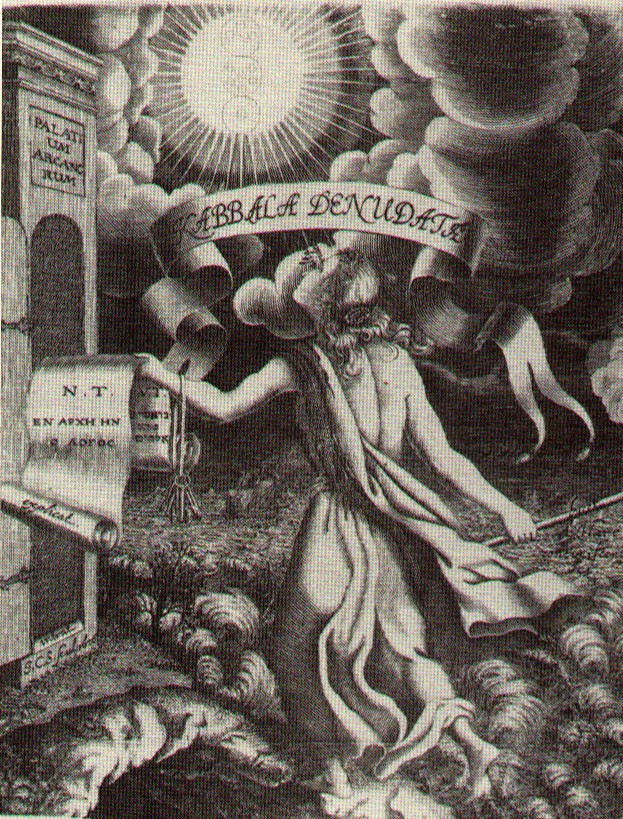
|
|
Contents The author's ongoing research and meditation on the relationship between Jungian (archetypal) psychology and the Kabbalah is presented in the following papers and tables: JUNG AND THE KABBALAH.
THE LURIANIC KABBALAH: AN ARCHETYPAL INTERPRETATION The Lurianic system is interpreted in Jungian, archetypal terms. TThe author articulates the signifiacnt correspondence between the Lurianic symbols (e.g. the Partzufim) and parallel notions in the psychology of C.G. Jung. As argued in "Jung and the Kabblah," this is likely no accident, as the very alchemical texts upon which Jung founded his archetypal psychology were themselves imbued with Kabbalistic ideas. Jung acknowledges some indebtedness to the Kabbalah, but he may very well have been influenced by it in ways that he was unaware of or unwilling to recognize. Regardless, the Kabbalah can provide archetypal psychology with an extremely rich source of symbols and theory. TABLE SUMMARIZING THE ARCHETYPAL INTERPRETATION OF THE LURIANIC KABBALAH. Summary table for the above referenced article, with links to explications of various Lurianic symbols. S. Drob,
Jung’s Kabbalistic Visions (Journal of Jungian Theory and Practice,
Journal of Jungian Theory and Practice, Vol. 7, No. 1, pp 33-54). Jung’s 1944 Kabbalistic Visions, which he
described as “the most tremendous things I have ever experienced”, are
discussed against the background of
Jung’s earlier provocative remarks about Jewish psychology and National
Socialism, Jung’s attitude towards the Jewish sources of his own theories,
Jung’s interest in Jewish mysticism, and from the perspective of both Jungian and Kabbalistic dream theory I
myself was, so it seemed, in the Pardes Rimmonim, the garden of pomegranates, and the wedding of Tifereth with Malchuth was
taking place. Or else I was Rabbi
Simon ben Jochai, whose
wedding in the afterlife was being celebrated. It was the mystic marriage as it appears in
the Cabbalistic tradition. I cannot
tell you how wonderful it was. I could
only think continually, “Now this is the garden of pomegranates! Now this is
the marriage of Malchuth with Tifereth!” I do not know exactly what part I played in
it. At bottom it was I myself: I was
the marriage. And my beatitude was that of a blissful wedding (C. G. Jung,
Memories, dreams, reflections (A. Jaffe, Ed.). THE DEPTH OF THE SOUL: JAMES HILLMAN’S VISION OF PSYCHOLOGY. The original version of this paper was published in Vol. 39(3) 56-72 of the Journal of Humanistic Psychology, Summer, 1999. James Hillman is a neo-Jungian psychologist whose work has many points of contact with the Kabbalah. In this paper, Hillman’s vision of psychology is explored and commented upon. Hillman’s deconstruction of psychological theory and his critique of humanistic psychology are considered against the background of several of his foundational ideas: the deepening of the soul, personification and the World-Soul, image and myth as the language of the psyche, the function of narrative, honoring psychopathology, psychological polytheism, and the deconstruction of the ego. These ideas are discussed in the context of similar Kabbalistic notions. Several of Hillman’s more controversial ideas are critiqued and the relationship of Hillman’s ideas to Hegel’s philosophy is explored. It is concluded that Hillman’s vision of psychology is not only far more humanistic than he himself acknowledges, but can serve as an important stimulus for contemporary Kabbalistic psychology. All materials contained herein are © 1998, 1999, 2000 by Sanford L. Drob. No reproduction is permitted without express written consent of the author. The Lurianic Kabbalah is treated in detail in Sanford Drob's Symbols of the Kabbalah and Kabbalistic Metaphors . If you entered this site via a search engine, and there are no "flash contents" on the left hand side of your screen, the site will function better if you click here and go directly to www.newkabbalah.com and follow the instructions at the bottom of your screen to either enter the site or load Flash 4, if you do not already have it. The Lurianic Kabbalah
|
|
|
Home | Lurianic Kabbalah | Books | Articles | Interviews | Dialog | New Projects |
